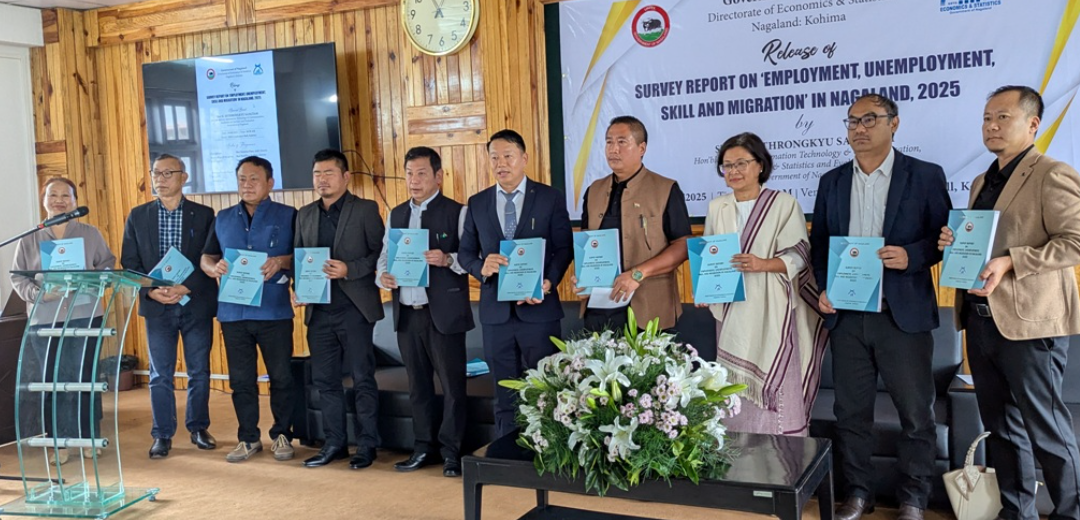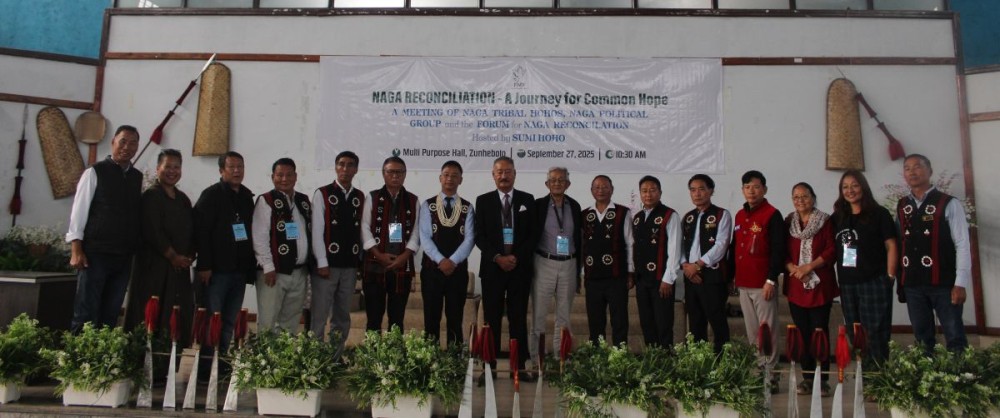Nagaland’s first state-level employment survey has revealed troubling figures. One in six working-age residents is unemployed and most lack technical skills, deepening divides in income and opportunity. Released in Kohima on September 19, 2025, the report paints a stark picture of unequal access to work across districts and highlights the urgent need for stronger district-focused skilling and employment policies. Officials describe the findings as a baseline for long-term strategies leading up to the state’s development vision for 2047.
16% jobless, uneven participation across districts
The Directorate of Economics and Statistics puts unemployment at 16.07% with labour force participation at 56%, highlighting a thin pool of opportunities and many people not engaged in work at all. Regional contrasts are clear. Wokha records the highest participation at 75% while Tuensang lags at 41%.
Mon stands out with the highest employment rate at 91.08% whereas Phek reports the worst unemployment at 25%. Officials noted these disparities are crucial for designing local responses tailored to district realities, aiming to overcome specific barriers in training and job access.
Also Read: Nagaland schools excel in tech while faltering on basics
Skills gap, informal work, and weak job search
A severe gap in skills marks one of the survey’s most striking findings. As many as 92% of respondents reported no technical or vocational training. Information technology emerged as the most common skill area but the report suggests opportunities to use these skills remain limited within the state.
Employment quality appears fragile. Many workers lacked written contracts and most were reported ineligible for social security, reflecting high levels of informality and weak labour protections. Job-seeking struggles compound the challenge.
About half of unemployed individuals had applied for jobs or reached out to employers, yet more than half remained without work for three years or longer with most lacking prior experience. These are clear signs of obstacles in job entry and placement.
Who is working, who is not, and what it costs
The survey shows a workforce dominated by self-employment. Press tallies placed this group at 24% alongside 13% salaried and 9% casual wage workers. An official note provided a different breakdown listing 56% as self-employed, 16% as public sector workers, and 13% in private salaried roles. The differences in presentation converge on one theme, self-employment forms the backbone of Nagaland’s labour market.
Household spending averaged ₹16,522 a month but spanned extremes from ₹1,133 to an extraordinary ₹3.6 lakh. Dimapur recorded the highest household spending while Longleng the lowest. Analysts linked these gaps to uneven work quality and opportunities across districts. Educational attainment averaged 11 years with only 2% illiterate.
However, employment correlation was strongest at moderate education levels and tapered at higher levels, hinting at limited returns on advanced degrees in the current job market.
Also Read: Kapil Sharma and Netflix hit with Rs 25 crore lawsuit over Hera Pheri skit
Migration flows and registered unemployment
Migration patterns also emerged as a critical indicator of labour stress. Rural to urban shifts led the movement at 55% followed by rural to rural at 25% and urban to urban at 17%. Just 3% moved urban to rural. Pull factors centred on city opportunities alongside public sector jobs, accounting for 27% of migration reasons.
Other drivers included business at 13%, marriage at 13%, private jobs at 7%, and education at 5%. For many, migration nudged earnings upward, with a share moving from ₹10,000 or less before relocating to the ₹10,000–₹20,000 range after.
Adding to pressure, 71,034 applicants were registered with state employment exchanges as of March 31, 2025, a clear sign of unmet demand and strains on placement services.
What officials say comes next
Advisor H. Sethrongkyu Sangtam described the survey as the first of its kind under the new Nagaland Sample Survey Unit, framing it as the foundation for policies targeting skills, sectoral gaps and district-specific solutions.
Departmental leaders highlighted complementary data collection efforts such as District Domestic Product and Consumer Price Index series which will support programme design. They urged policymakers, researchers, and civic groups to use the findings broadly, noting that without sustained action on jobs, skills, and protections, the state’s workforce risks prolonged vulnerability.




